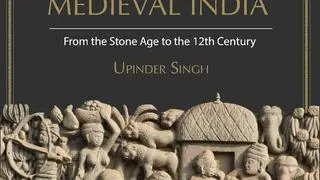The BJP’s successful outreach towards the Dalit community in the Hindi heartland has been one of the remarkable aspects of Indian politics in these nine years of the Modi government. This surprisingly coincided with the gradual eclipse of the once-powerful Bahujan Samaj Party in UP and the emergence of smaller Dalit parties. The term subaltern Hindutva is now firmly entrenched in the political lexicon of the nation.
But how did the BJP, traditionally seen as an upper caste party, manage to attract droves of Dalits into its fold? Sudha Pai and Sajjan Kumar in their book Maya, Modi, Azad: Dalit Politics in the Time of Hindutva, decode the changing, often contradictory, contours of Dalit politics in UP.
The authors have combined extensive field research, interviews with Dalit leaders, journalists and experts and media reports in an insightful way.
The book is divided into three parts – the first talks about the BSP’s successful rainbow (Sarvajan) coalition and its unravelling in UP. The next, and the most interesting, section analyses the BJP’s successful inclusion of large sections of the Dalit community into its fold. The third section talks about the emergence of new, more radical Dalit organisations, their prospects and the fragmentation of Dalit politics.
The authors talk in detail of the BSP’s various grassroots initiatives (Bhai-chara committees) to reach out to Brahmins and similar outreach exercises to woo OBCs and Muslims, which culminated in Mayawati’s historic 2007 UP Assembly victory.
But winning the elections with a coalition beset with internal contradictions was bound to have lasting impact. The authors perceptively point out that many of the infrastructure projects that Prime Minister Modi inaugurated before the 2022 UP Assembly elections were initiated by BSP and taken forward by the SP regime.
Unwieldy coalition
Growing corruption, the statue building spree and the internal contradictions of an unwieldy coalition of communities hastened BSP’s downfall. But tellingly, the authors point to another important factor – the growing aspirations of the educated Dalits and that five years were too little for the BSP to fulfill them. It was in this milieu that the BJP steeped up its Dalit outreach. It had a two-point agenda – one was electoral, to defeat the BSP, and the second was cultural, to bring the Dalits into a consolidated Hindu vote bank.
In the run-up to the 2014 general elections, Modi’s Achche Din rhetoric resonated with the Dalits in UP. The BJP also successfully tapped the non-Jatav Dalit communities who were beginning to feel left out of the Jatav-dominated BSP.
But the BJP’s bigger success lay in reimagining Hindutva as a subaltern ideology, which made large sections of Dalits believe that this ideology gave them a better chance of social empowerment.
The authors talk about the BJP’s successful “new welfarism” model – Jan Dan Yojana, the free LPG connections scheme (Ujwala Yojana), electricity connections (Saubhagya scheme) – which all played a crucial role in wooing the Dalits.
Providing private goods to households through the Direct Benefit Scheme (DBT) was seen as a “caste-neutral”, and “community neutral” model of delivering welfare and made a huge impact on the Dalit community both in terms of direct welfare benefits and perception.
Growing anger
Despite the growing violence in the run-up to the 2019 general elections, the Dalits in UP voted for the BJP in large numbers both in the 2019 general polls as well as the 2022 Assembly elections. The authors in their field studies found out that though there was growing anger among Dalits over the atrocities, crucially they did not directly blame the BJP or the Prime Minister for it.
Also the authors perceptively say that since a section of Dalits need government welfare schemes for their everyday sustenance they will always vote for the party that delivered welfare efficiently – and here the BJP scored over the other parties.
So was the Dalits’ switch to the BJP tactical or ideological? The authors say that this should not be seen as a binary as the tactical and the ideological aspects overlapped. Apart from the BJP’s new welfare model and successful last-mile delivery, the authors say that there was an undeniable “saffronisation” of Dalits and “othering” of Muslims. The BJP venerated the cultural and religious icons of the non-Jatav communities’ – Balmikis and Ramdasis – which played a crucial role in bringing them into the “Hindutva” fold.
In the last section, the authors talk about the rise of new Dalit organisations such as Chandrashekhar Azad’s Bhim Army, Shravan Kumar Nirala’s Ambedkar Jan Morcha and Daddu Prasad’s Bahujan Mukti Party. Though these parties play crucial role in agitational politics -- protesting against Dalit atrocities – to make an impact electorally they have a long way to go.
The authors say that given the hegemonic presence of the BJP in UP, the chances of a revival of an autonomous Dalit movement seem grim. But the BSP over the years, and the more radical new outfits have undeniably created a viable Dalit assertion, with significant economic and cultural gains.
This book is a must read for those interested in the Dalit politics and its growing saffron affinity.
Check it out on Amazon.









Comments
Comments have to be in English, and in full sentences. They cannot be abusive or personal. Please abide by our community guidelines for posting your comments.
We have migrated to a new commenting platform. If you are already a registered user of TheHindu Businessline and logged in, you may continue to engage with our articles. If you do not have an account please register and login to post comments. Users can access their older comments by logging into their accounts on Vuukle.